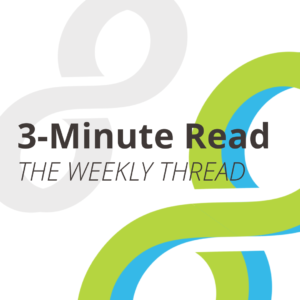Untangling Titles in U-I Partnerships
 March 20, 2023 — Among the highest ranking titles in the Ben & Jerry’s Ice Cream enterprise is “grand poobah,” currently held by Sean Greenwood, its PR and communications director. Granted, Ben & Jerry’s is known for its sense of humor, but title obfuscation is rampant in the research collaboration and partnership space.
March 20, 2023 — Among the highest ranking titles in the Ben & Jerry’s Ice Cream enterprise is “grand poobah,” currently held by Sean Greenwood, its PR and communications director. Granted, Ben & Jerry’s is known for its sense of humor, but title obfuscation is rampant in the research collaboration and partnership space.
Professional titles should demarcate a person’s role and level within an organization, but often they’re confounding rather than clarifying. From vice president to director to manager, it takes a roadmap to navigate the roles based on title, a reality that’s particularly vexing when making new connections with the right people is a big part of your job.
Titles designate rank, but too often they’re an internal construction and don’t translate to comparative roles in other organizations. For example, a National Science Foundation directorate lead is titled “assistant director,” a corporate middle management level descriptor. These individuals lead critical program directors and guide their efforts on behalf of the U.S. national science and technology enterprise; together, their offices awarded $8.5 billion in research funding in 2021. That’s hardly equivalent to a middle management role.
What’s in a name (or title)?
Academic and industry titles are no less confusing. Even if you have experience working with universities and companies, individual entities can be different from others because every institution has its own framework, names for offices, and roles for the people in those offices. It’s not always clear which office at a university sets the university’s strategic direction and priorities, who bears ultimate responsibility for a particular transaction, and which other offices need to be involved. In the past decade, universities have tried to overcome this barrier by establishing central research offices with a single “front door” concierge model so one point of contact can guide the industry partner through the labyrinth.
The ambiguity isn’t limited to universities. Like their academic counterparts, companies have differing internal structures and related titles that can be difficult to navigate. The manager of academic relations at one company may be the person who does workforce development. But they might just as easily do the tech scouting and sponsored research engagement. Some companies have well-defined, open innovation organizations that manage collaborations, while others rely solely on their lead researchers to work with universities to move collaborations through to completion. UIDP published detailed guidance on navigating this landscape in its member resource, Comparing Internal Structures. When it’s necessary to build a matrix of titles that cross walks common company and university research ecosystem titles, you know there’s a problem.
Titles have the potential to stymie partnerships. It’s just easier to find the right people at the right time to make connections if their role is easy to identify on a website or registry. Less time spent searching for the right point of contact means more time to focus on building a mutually-beneficial partnership.
Titles also can impact expectations and perceptions. They indicate level of expertise or experience, and whether the individual is the final decision-maker. The wrong title may lead to an awkward exchange at the least, and at worst over- or under-selling the opportunity to partner. Having clear-cut titles can help potential partners understand different levels of expertise and experience—and make it easier to partner.
Why it matters
Great academic and corporate relations pros do their homework and go beyond the title to understand people and their responsibilities in the organization. They start with established relationships and ask their contacts to recommend the right person in an organization for the opportunity at hand or reach to their counterparts in the target organization for an introduction. Getting to know the “who” and being authentic in your approach is always the right first step—something we see a lot at our UIDP conferences and regional meetings.
We’ve all encountered the challenge of unclear job titles. Ensuring that they don’t impede research collaboration is important to maintain mutually beneficial partnerships. We want to hear from you: what is your favorite story about a confusing job title? Let us know on our LinkedIn profile.


